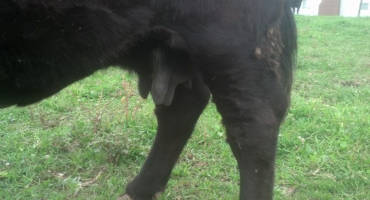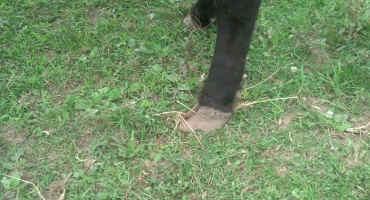By John F. Grimes
Weaning time is an excellent time to evaluate your cow herd and decide which cows get to remain in your herd as productive females. If they are not being productive for you, they need to be replaced by heifer calves retained from within the herd or by purchased bred females.
Cows and heifers leave operations for a variety of reasons. Ask a room full of cow-calf producers for the key reasons to cull a female from the herd. I would feel confident that the reasons would include any or all of the following factors: 1. Age or bad teeth; 2. Pregnancy status (open or aborted); 3. Temperament; 4. Other reproductive problems; 5. Economics (drought, herd reduction, market conditions); 6. Producing poor calves; 7. Physical unsoundness; 8. Udder problem; and 8. Bad eyes. While all of these factors are valid reasons for culling, I suspect that the first three factors listed who be the top reasons for culling in any given year.

Balloon teats are one example of an unsound udder. Udder problems affect milk production and consumption that in turn, impact weaning weights.
Beef producers are often disappointed when an animal has to be culled from the herd. While marketing these cull animals is commonly viewed as a loss, keep in mind that it is also a significant source of income for a herd. Surveys have shown that cull animals can contribute up to 20-25% of a herd’s gross income. Slaughter cow prices tend to be the highest and relatively steady from February to August with the lows coming in October through December. Recognize that a timely opportunity to market cull animals may be rapidly coming to a close. If you have adequate feed resources, marketing cull animals in early 2018 may be the best option.

Lack of structural soundness leads to hoof and leg problems that result in mobility concerns hampering the ability to graze.
I encourage you to view a moderate level of annual level of culling as a potential positive for the herd. Besides a supplemental source of income for the herd, a few strategic subtractions from the herd can add to its overall quality.